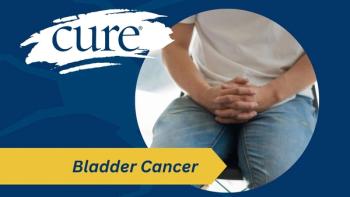
How to Curb Long-Term Stress in the Workplace Following a Cancer Diagnosis
Techniques, such as stop, shift and stabilize, may help cancer survivors avoid stressful exchanges with coworkers, according to one expert.
To help lower long-term stress during and after cancer, patients should increase self-awareness, explained Julie Larson during
The licensed clinical social worker and psychotherapist asked the crowded room of patients and survivors to consider the following: What triggers your stress? How do you recognize it? Who is good for you? Who is challenging? And how can you build up personal resilience?
Sometimes it’s as simple as being tired, hungry, sick, overwhelmed or emotional that can make a person more vulnerable to
“You are so important, valuable and strong that we need to take a second, you need to take a second in your life, to sit back and prepare for what you need to protect yourself as you walk into stressful situations,” said Larson.
Triggers can occur based on certain people; dates on a calendar; times of the year; and hot topics, such as treatment plan, faith or diet. “Know the people who really work for you, so you can call those people in as you need,” she said. “Are there people that you work with who know about your diagnosis and who know you’re returning to work? You can say, ‘As I return to work, it’s just nice to have you there with me.’ It gives them a heads up that they are support to you.”
Family and friends are also good resources for when a patient returns to work. Ask them to keep their phone close so you can text or call throughout the day if needed, explained Larson.
Three key components can ease the transition back into work: identifying the “voice” inside your head, creating a distraction plan and developing a relaxation plan.
The voice in someone’s head, or “thought trap,” as Larson called it, can prevent them from being present. For example, people may find themselves worried about the future, personalizing everything or thinking “should have, must have, ought to have.”
“Managing the voice in your head takes a lot of work,” said Larson. “And sometimes it’s good to know what your tendencies might be and what you might do so you can address it in the beginning before you go in.”
Then construct a plan as a temporary solution that will help buy time if someone finds themselves in a stressful situation. Shift the focus and get grounded, explained Larson. “Uncross the legs. Put two feet on the ground. Touch your body in some way. Hug your body. Connect with your senses,” she said.
Distraction methods could also consist of turning on music, taking a walk, looking out the window or up at the sky. “When we get hijacked emotionally, how you turn the flashlight of your attention somewhere else — whether it’s onto the body, so breath and your heart rate, or whether it’s looking into the eyes with interaction of another person or putting on TV,” said Larson. “Take the flashlight of your attention and move it off that thought.”
After someone identifies and distracts, then it’s important to self-soothe. A relaxation plan can include getting in touch with the five senses — sight, smell, touch, taste and hearing. Although being
- Do someone a favor, such as buying a cup of coffee for the person behind you.
- Procrastinate. This can be done by setting aside 30 minutes of the morning to check personal emails, then dive into work.
- Hide your phone. The ringing and buzzing can be too distracting and overwhelming.
- Disappear for a little. You can go for a walk or hide in a bathroom.
- End the day like you mean it. Come home, put on comfortable clothing and make a cup of tea. Wind your clock down.
- Break before lunch. Research shows if you take a break midway through your morning that you’re more productive throughout the day, said Larson.
- Gossip with coworkers, such as talking about “American Idol” or “This Is Us.”
To protect against stressful conversations, Larson advised patients and survivors to stop, shift and stabilize. By stopping the conversation, the person can cut off the personal direction of the exchange. For instance, say “Oh goodness, I’m so sick of talking about stupid cancer.” Next, redirect the conversation. Examples of what to say include “Do you have vacation plans this summer?” and “Are we still having that meeting later today?” Finally, the person should breathe and get grounded before moving back into the work day.
If managing it all becomes too much, seeking professional support, connecting with fellow patients and survivors or turning to family and friends can be great options, explained Larson.
“Cancer has taken too much from you. Don’t let it take your present,” said Larson. “When you find your thoughts are spinning, then you have to think to yourself ‘It’s happening,’ and get yourself out. Think of what is, not what if.”





